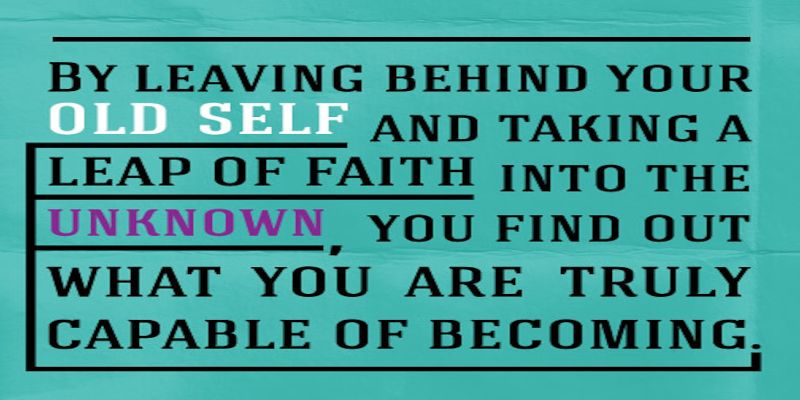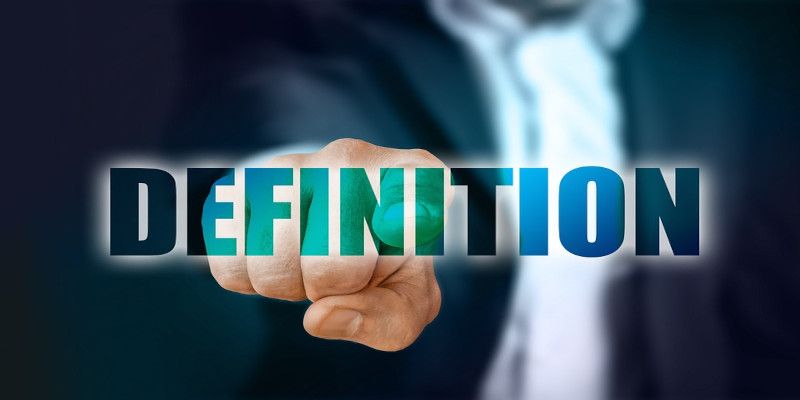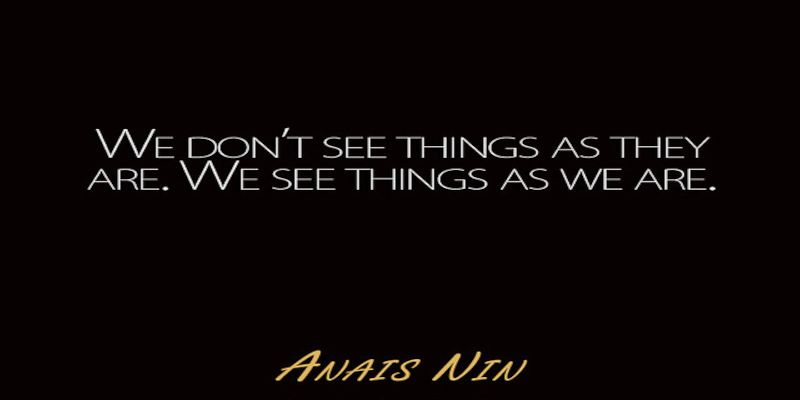Table of Contents
ToggleEver wondered why negative people see negativity everywhere they look, and optimistic folks see positivity all over the place?
It’s because we don’t see things as they are, we see things as we are.
Although there are objective, observable truths in life, a lot of our interpretations of what’s happening in this world are extremely subjective and colored by our personal views.

We only see what we’re looking for
You only see what you focus on, and what you’re aiming at. You ignore all the other data that comes your way.
The advantage of this behavior is that you can focus on the goal(s) you’re trying to achieve while minimizing wasted time on the less “necessary” stuff for reaching your dreams. All in all, it prevents distractions from getting in your way.
On the flip side, since we see the world as we are, we’re neglecting a large part of the world. Or we’re at the very least missing out on learning multiple different ways of interpreting the world.

This means that there’s a large part you don’t see, and that will remain unknown to you. This narrow, specific way of looking at the world can prevent you from learning new things since you don’t get a lot of “new” opportunities to learn. In other words, your new experiences remain limited, and that means your personal view will stay that way as well.
Since we learn the most from the things we don’t yet know, it can be extremely valuable to broaden our perspective and to take in a broader, more holistic perspective.
Our personal thoughts, views, biases, and prejudices determine our worldview

Our personality and feelings shape our perception. These personal thoughts, views, and biases will decide in what light we see the world as well as the people living in it.
We typically think that we see the world for what it is. We see it more realistically than others. But this is not always the case. Our biases and prejudices frequently prevent us from seeing the truth, and unbeknownst to us, will color everything we think and see during our lifetimes.
Not to mention that some folks have a hidden agenda for their gain. They’re trying to accomplish something that fits their narrative and that benefits them personally. That’s exactly why a lot of people only see the things that they want to see, all the while conveniently ignoring all the rest, and even the truth when it suits them.

But the most critical aspect of not being able to see things like they are might be the confirmation bias coming into play.
Confirmation bias means that we’re actively searching out information that confirms our preexisting notions about the world, regardless of whether those beliefs are true or not.
Likewise, we actively deny and ignore the information that indicates otherwise. This inherent desire to search out data that fits our way of thinking while simultaneously disregarding all other information leads to a very narrow-minded way of thinking. Not to mention a wrong one at that.
Growth lies in the unknown

We can’t reach any of our goals if we aim at things halfheartedly. It needs to be a conscious, thought-out, and focused aim at the goal we’re trying to achieve.
However, it is often in those ignored/unconscious parts of ourselves and our existence where the development lies. Because chances are that you are already pretty good at the things you’re aware of.
What you need to learn the most lies in the shadows. In the path that you still need to discover. That’s why having the courage to undertake challenges, and to take the opportunities that are presented to you, is so important.
We attract what we are

We attract what we are, not what we want. Wanting something is one thing, but getting it is an entirely different issue. You must prepare yourself to get what you desire. Because most of the time, we only get what we deserve.
We can’t simply wish something into reality. Sure, having a vision in life helps us to attain something by having a goal to aim at, and by figuring out what abilities we need to develop. But that alone is not enough. If we don’t work hard, put in the time, and hone our skills, then we’re never going to get close to those lofty ideals.
For instance, you typically don’t simply become a millionaire by wishing or dreaming you are one. You become one through blood, sweat, and tears, and by putting in countless hours of work time. All the while being extremely persistent and disciplined.
–> What it comes down to is that even the most rational and objective of people are still highly susceptible to their emotions and feelings.
That’s why even though we might be conscious of this simple fact, it’s still extremely hard, and even impossible, to remain completely impersonal.
Frequently Asked Questions (FAQ)
What does, “we don’t see things as they are, we see things as we are” mean?

We do not see things as they are means that we only see what we want to see in life, all the while ignoring all the rest that’s going on. But also that we see life through colored glasses, which means that our personality decides how we interpret the world.
Furthermore, it conveys that we project our feelings, personality, values, and ethics, but also our biases and prejudices onto the world.
This means that we don’t necessarily get an objective or accurate view of the world, but rather a subjective, personal interpretation of what’s going on in our existence.
Who said, “We don’t see things as they are, we see things as we are?”

What is an example of why we don’t see things as they are, we see them as we are.

Conclusion

We don’t see things as they are, we see things as we are. Consequently, people only hear what they want to hear as well.
Our personalities, thoughts, and ideas color the way we view the world and its inhabitants. This means that everyone experiences their existence differently than their peers.
Still, we should make it a point to see the world for what it truly is. As realistically as humanly possible to stay grounded in reality.
Living in a fairy tale can be fun, and even exciting for a while. But good times don’t last. Sooner or later, that fantasy world will collapse, and we will be left trying to fix the broken pieces.
Call to action

Try to make it a point to view the world as objectively and realistically as possible, all the while avoiding biases and prejudices.
Confirmation bias is the most common and important one to avoid. Try to search for the truth rather than for information that confirms your current belief system to get an accurate view of the world.
In the end, being, and remaining grounded in reality is best to live a satisfying life. Not to mention that it’s your best bet to become successful as well.
